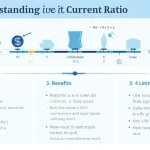Is this tool helpful?
How to use the tool
- Weight lifted – type the load you pressed. Example 1: 185 lb. Example 2: 90 kg.
- Repetitions – enter completed reps (1-12). Try 6 reps (example 1) or 3 reps (example 2).
- Unit selector – match the units of your entry (lbs / kg).
- Formula – choose Epley, Brzycki, or Lombardi; each estimates 1RM differently.
- Body-weight (optional) – add it to get a strength-to-weight ratio and classification.
- Hit “Calculate” – your 1RM, ratio, class, and comparison bars appear instantly.
Underlying formulas
Epley:
$$ 1RM = w \left(1 + rac{r}{30}\right) $$Brzycki:
$$ 1RM = rac{w}{1.0278 – 0.0278 r} $$Lombardi:
$$ 1RM = w \, r^{0.10} $$Example calculations
- 185 lb × 6 reps (Epley): 1RM = 185 × 1.2 = 222 lb.
- 90 kg × 3 reps (Brzycki): 1RM = 90 / 0.9444 = 95.3 kg.
Quick-Facts
- Re-test 1RM every 4-6 weeks to track progress (ACSM Guidelines 2021).
- Epley error margin ≈ ±8 % when reps ≤ 10 (J Strength Cond Res 2018).
- Ratio ≥ 1.5 categorises male lifters as “Advanced” (StrengthLevel Bench Press Standards, strengthlevel.com).
- Average untrained male 1RM ≈ 93 % body-weight (National Strength and Conditioning Association 2021).
FAQ
What is a one-rep max?
The one-rep max is the greatest weight you can bench once with correct form (NSCA 2021).
How do the three formulas differ?
Epley scales linearly with reps, Brzycki adjusts denominator, Lombardi uses an exponent; all work best for 1-10 reps (J Strength Cond Res 2018).
Which formula should I pick?
Choose Epley for simplicity, Brzycki for moderate reps, Lombardi for low reps; compare results and use the average (Helms et al. 2020).
Why enter body-weight?
Adding body-weight lets the tool calculate your strength-to-weight ratio, a fairer comparison across sizes (ACSM Guidelines 2021).
How accurate is the estimate?
When reps stay below 10, prediction error usually stays within 10 % of true 1RM (J Strength Cond Res 2018).
How often should I update inputs?
Update after deloads or performance jumps; monthly checks align with adaptive strength cycles (ACSM 2021).
Can I use the formulas for squats or deadlifts?
Yes; research shows similar error rates across major lifts when rep ranges match (Zourdos 2016).
What does proper setup look like?
“Maintain five points of contact before lowering the bar” (ACSM Guidelines 2021) to stabilise and protect joints.
Important Disclaimer
The calculations, results, and content provided by our tools are not guaranteed to be accurate, complete, or reliable. Users are responsible for verifying and interpreting the results. Our content and tools may contain errors, biases, or inconsistencies. Do not enter personal data, sensitive information, or personally identifiable information in our web forms or tools. Such data entry violates our terms of service and may result in unauthorized disclosure to third parties. We reserve the right to save inputs and outputs from our tools for the purposes of error debugging, bias identification, and performance improvement. External companies providing AI models used in our tools may also save and process data in accordance with their own policies. By using our tools, you consent to this data collection and processing. We reserve the right to limit the usage of our tools based on current usability factors.







